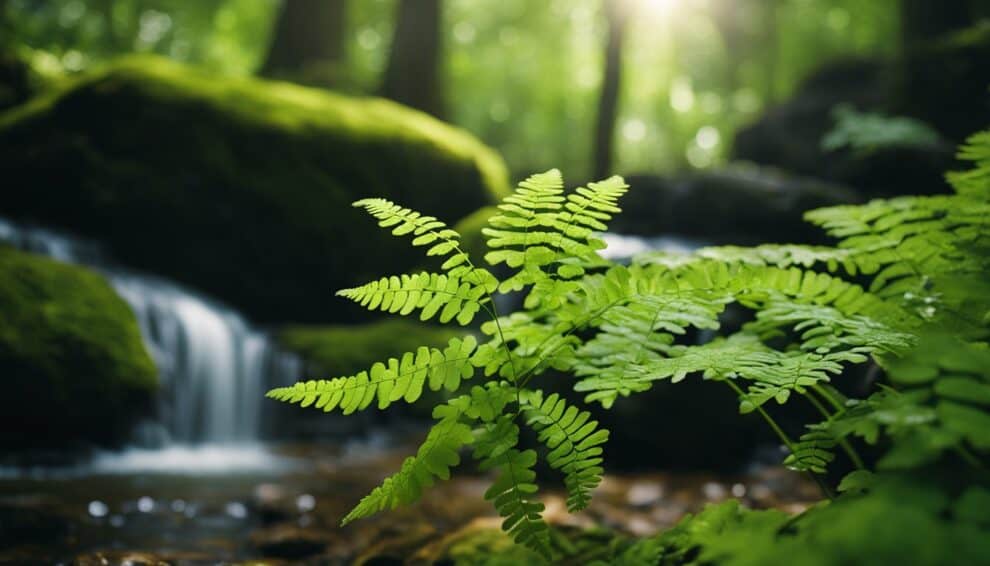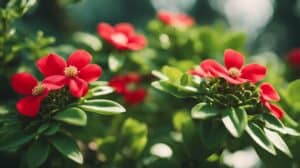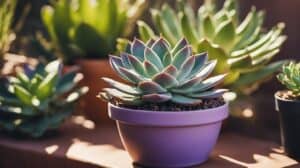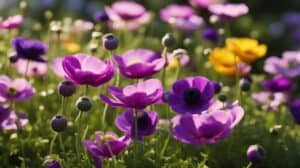Maidenhair ferns, also known as Adiantum, are popular houseplants that are loved for their delicate, lacy foliage.
These plants can be a bit finicky, but with the right care, they can thrive and add a touch of elegance to any room.
In this learner’s manual, readers will discover everything they need to know to keep their Adiantum healthy and happy.

One of the most important things to know about Maidenhair ferns is that they require a humid environment to thrive.
This can be challenging in some homes, especially during the winter months when indoor heating can dry out the air.
However, with a few simple tricks, it is possible to create the perfect environment for these delicate plants.
This guide will provide readers with tips for increasing humidity levels, such as using a humidifier or placing the plant on a pebble tray.
Another key factor in the health of Maidenhair ferns is proper watering.
These plants are sensitive to both underwatering and overwatering, so finding the right balance is essential.
In this guide, readers will learn how to determine when their plant needs water, as well as how much and how often to water.
They will also discover the importance of using the right type of water and potting mix to ensure optimal growth.
Understanding Maidenhair Ferns
Species Overview
Maidenhair ferns, also known as Adiantum, are a genus of around 250 species of ferns found across the world.
They are characterized by their delicate, fan-shaped leaves and dark, wiry stems.
Maidenhair ferns are popular houseplants due to their attractive foliage and ease of care.
One of the most common species of maidenhair fern is Adiantum raddianum, which is native to South America.
It has been cultivated for over a century and is a popular choice for indoor gardening due to its tolerance for low light conditions.
Historical Significance
Maidenhair ferns have a long history of use in traditional medicine.
The leaves are rich in flavonoids and other compounds that have been shown to have anti-inflammatory and antioxidant properties.
In ancient times, maidenhair ferns were used to treat a variety of ailments, including respiratory infections, digestive issues, and skin conditions.
In addition to their medicinal properties, maidenhair ferns have also been used in folklore and mythology.
In some cultures, they are believed to bring good luck and prosperity, while in others they are associated with death and mourning.
Overall, maidenhair ferns are a fascinating and versatile plant that have played an important role in human history.
Whether grown for their beauty or their medicinal properties, they are a valuable addition to any garden or home.
Caring for Your Maidenhair Fern

Ideal Growing Conditions
Maidenhair ferns are native to tropical and subtropical regions, so they thrive in warm and humid environments.
They grow best in bright, indirect light, but direct sunlight can scorch their delicate fronds.
If you’re growing your maidenhair fern indoors, place it near a window that receives filtered light.
Watering Techniques
Maidenhair ferns require consistent moisture, but they are sensitive to overwatering. Water your fern when the top inch of soil feels dry to the touch.
Use room temperature water and avoid getting water on the fronds, as this can cause leaf spot.
If your fern is in a pot without drainage holes, be sure to monitor the soil moisture closely to prevent root rot.
Fertilization and Soil Requirements
Maidenhair ferns prefer well-draining soil that is rich in organic matter.
A mixture of peat moss, perlite, and vermiculite is an excellent choice for potting your fern.
Fertilize your maidenhair fern every 2-3 months during the growing season with a balanced liquid fertilizer diluted to half strength.
Avoid fertilizing during the winter months when the plant is dormant.
By following these simple tips, you can keep your maidenhair fern healthy and thriving for years to come.
Common Challenges and Solutions

Pest Management
Maidenhair ferns are prone to pest infestations, which can cause damage to the plant if not managed properly.
Common pests that affect maidenhair ferns include spider mites, mealybugs, and scale insects.
To prevent pest infestations, it is important to keep the plant healthy by providing it with adequate light, water, and nutrients.
Regularly inspect the plant for any signs of pests, such as yellowing leaves or webbing on the leaves.
If pests are detected, there are several solutions that can be used to manage the infestation.
One option is to use a natural insecticide, such as neem oil or insecticidal soap.
These products are effective at killing pests while being safe for the plant and the environment.
Another option is to manually remove the pests using a soft-bristled brush or a cotton swab dipped in rubbing alcohol.
Disease Prevention
Maidenhair ferns are also susceptible to various diseases, including fungal infections and root rot.
These diseases can be caused by overwatering, poor drainage, or high humidity levels.
To prevent disease, it is important to ensure that the plant is not overwatered and that the soil has good drainage.
Maidenhair ferns prefer slightly moist soil but can be damaged by standing water.
It is also important to avoid getting water on the leaves, as this can promote the growth of fungal spores.
If a disease is detected, it is important to act quickly to prevent it from spreading to other plants.
One solution is to remove any infected leaves or stems and dispose of them properly.
Another option is to use a fungicide to treat the plant and prevent the disease from spreading.
By following these pest management and disease prevention tips, gardeners can help their maidenhair ferns thrive and stay healthy.
Propagation and Repotting

Propagating Adiantum
Maidenhair ferns are easy to propagate through spores or division. Spores can be collected from the underside of mature fronds and sown on moist soil.
It is important to keep the soil moist and warm for the spores to germinate.
Once the spores have grown into small plants, they can be transplanted into individual pots.
Division is another method of propagating Maidenhair ferns. It involves separating the plant into smaller sections and planting them in separate pots.
This is best done during the plant’s active growth period in spring or early summer.
To divide a Maidenhair fern, gently remove it from its pot and carefully separate the roots into smaller sections.
Make sure each section has some roots and fronds. Plant each section in a pot with fresh soil and keep it moist until it establishes itself.
Repotting Steps
Maidenhair ferns prefer to be slightly root-bound, so they do not need to be repotted frequently.
However, if the plant has outgrown its pot or the soil has become depleted, it may be time to repot.
To repot a Maidenhair fern, gently remove it from its pot and loosen the roots.
Choose a pot that is slightly larger than the current one and fill it with fresh, well-draining soil.
Place the plant in the new pot and fill in the gaps with soil. Water the plant thoroughly and keep it in a shaded area until it recovers.
It is important to avoid disturbing the roots too much during repotting, as Maidenhair ferns are sensitive to root damage.
It is also recommended to repot the plant in spring or early summer when it is actively growing.
Frequently Asked Questions

What type of soil is best for growing a healthy maidenhair fern?
Maidenhair ferns prefer soil that is rich in organic matter, well-draining, and slightly acidic.
A good potting mix for these ferns should contain peat moss, perlite, and vermiculite.
Avoid using heavy soils that retain moisture as this can lead to root rot.
How can I prevent the leaves of my maidenhair fern from turning crispy or brown?
Maidenhair ferns require high humidity to thrive.
To prevent the leaves from turning crispy or brown, mist the leaves regularly or place the plant in a tray filled with pebbles and water.
Additionally, avoid exposing the plant to direct sunlight or cold drafts.
What are common problems with maidenhair ferns and how can I address them?
Common problems with maidenhair ferns include pests such as spider mites and mealybugs, as well as diseases such as root rot and leaf spot.
To address these issues, regularly inspect the plant for pests and remove any infected leaves.
Additionally, ensure that the plant is not overwatered and that it is placed in a well-ventilated area.
How frequently should I water my maidenhair fern for optimal growth?
Maidenhair ferns prefer moist but not waterlogged soil. Water the plant when the top inch of soil feels dry to the touch.
Avoid letting the soil dry out completely as this can lead to leaf drop.
What kind of fertilizer should I use for my maidenhair fern and how often?
Maidenhair ferns do not require frequent fertilization.
Use a balanced liquid fertilizer diluted to half strength once a month during the growing season (spring and summer).
Avoid fertilizing the plant during the fall and winter months.
Can maidenhair ferns be grown outdoors, and if so, what are the best conditions?
Maidenhair ferns can be grown outdoors in areas with mild temperatures and high humidity. They prefer partial to full shade and well-draining soil.
Avoid exposing the plant to direct sunlight or cold drafts.














